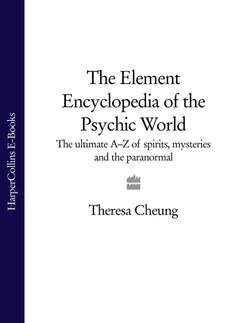Читать книгу The Element Encyclopedia of the Psychic World: The Ultimate A–Z of Spirits, Mysteries and the Paranormal - Theresa Cheung, Theresa Cheung - Страница 230
DEATHBED VISIONS
ОглавлениеVisions experienced by the dying. Most are visions of the afterlife, glowing entities of light and apparitions of the dead known to the person dying, or great religious or mythical figures such as the Virgin Mary. Deathbed visions are extremely significant because they provide evidence in support of life after death. Although most religions and cultures believe in an afterlife, Western science believes that consciousness cannot exist separately from the body and death is the destruction of the personality.
Deathbed visions have been recorded in the literature of all ages and have been researched scientifically since the late nineteenth century. In the early twentieth century Sir William Barrett, professor of physics and a psychical researcher, conducted the first systematic study of such visions. Barrett’s interest in the subject was fuelled by his wife, an obstetric physician, who told him about a woman who spoke of seeing a vision of great beauty and seeing her dead father and sister before she died. What impressed Barrett was the fact that although the woman’s sister had died a few weeks earlier there was no way she could have known that.
The next systematic study of deathbed visions took place in 1960, when American Society for Psychical Research investigator Karlis Osis collected information from doctors and nurses on thousands of deathbed visions in the US and India. Other studies followed, including an Indian survey in 1972. The findings and observations found in these studies confirmed those made by Barrett.
Typically deathbed visions occur to those who die gradually from a terminal illness or injury rather than those who die suddenly. Many of the visions are of apparitions of dead loved ones or family members known to the dying person, such as parents, siblings and spouses, or beings of light perceived as mythical or religious figures. The purpose of these apparitions - called take away apparitions - appears to be to command the dying to come with them and thus assist them in the transition to death. The response of most of the people dying to these visions is one of happiness, peace and a willingness to go. Their mood changes from one of suffering to one of radiance and joy.
Approximately a third of deathbed visions involve a vision of the afterlife, which is typically described as a beautiful garden. Some see apparitions there, others see streams, bridges and boats and other symbols of transition. Again the emotional response is one of great happiness and peace. The great majority of visions appear just before death with the patient dying shortly afterwards.
There are various natural explanations given for deathbed visions. Drugs, fever, disease, the brain suffering oxygen deprivation, hallucinations and wish fulfilment have all been given as possible causes. Although they are plausible explanations, Osis’s research showed clearly that deathbed visions are most likely to occur in the fully conscious and that medical factors do not trigger visions. Wish fulfilment is not a likely explanation either because visions appear both to those who believe and to those who do not believe in an afterlife, and also appear to those who want to recover and live. Finally there have also been reports by the living who are in attendance to the dying of clouds of silvery energy floating over the body, as well as take away apparitions and angels.
Deathbed visions are significant not just because they suggest the possibility of survival after death, but because they also demonstrate that the moment of transition to death should not be feared. If reports of deathbed visions are to be believed, for the person who is dying death can be a wonderful and beautiful experience.
